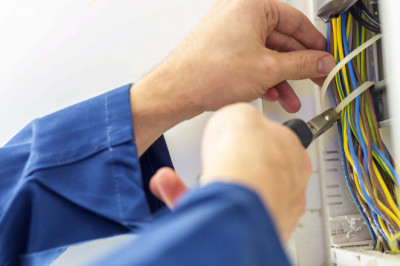views

In this blog post, we'll discuss how to use picture hooks perfectly every time so that you can avoid any problems. We'll also share some tips for choosing the right picture hanging system for your needs.
Picture hooks come in a variety of shapes and sizes, and it's crucial to get the right ones for the job. Heavy picture frames or mirrors should use heavy-duty hooks that can support the weight sufficiently, and smaller hooks should be used for lighter items. Wrongly-sized hooks can cause accidents or damage to walls and other surfaces.
When hanging pictures, it's also important to use the correct number of hooks. Too few hooks can cause your picture to sag, while too many can put unnecessary stress on the wall. Here are some other tips to follow when using picture hooks to display artwork on your walls.
Find The Best Place to Hang Your Painting
Use a level or some type of measuring guide to plan your picture placement. This will ensure that your picture is hanging straight and won't be lopsided. If you're using picture wire to hang your artwork, make sure that it's the correct size and gauge for the job. Too thin of a wire can cause sagging or breakage, while too thick of a wire can be challenging to work with.
Consider The Material of Your Wall
When hanging pictures on your walls, it's essential to consider the material the walls are made from. If your walls are made of plasterboard, which is a very common building material for Australian homes, then you'll need to consider the weight of what you're hanging carefully. Large artworks or those that are housed in heavy timber frames should really be hung from hooks that are secured to wall studs. Lighter pictures though can usually be hung safely using a toggle or plasterboard anchor.
In the case of hanging artworks onto brick walls, a simple and surefire method is to drill a hole with a masonry bit and then screw your hook into a plastic wall plug. These are reasonably easy to remove and won't damage your wall if you need to reposition or take your artwork down at a later stage.
Toggle Hooks
Toggle hooks are a type of picture hanging hook that is commonly used in homes. They are easy to use and can be removed without damaging your walls. To use a toggle hook, firstly, insert the metal part of the hook into the hole that you've drilled in your wall. Then, push the plastic part of the hook through until it clicks into place. Your picture can then be hung from the hook.
Plasterboard Anchor Hooks
Plasterboard anchor hooks are another option for hanging pictures on plasterboard walls. These hooks work by spreading the load of the picture across a larger area, which helps to prevent damage to your wall. To use a plasterboard anchor hook, firstly, insert the hook into the hole that you've drilled in your wall. Then, use a screwdriver to tighten the nut on the back of the hook. Then, hang your picture from the hook.
Hanging Pictures from Studs
If your picture is particularly heavy, then it's safest to hang it from a stud in your wall. Hanging pictures from studs gives the most support and will help to prevent damage to both your picture and your wall. To find a stud in your wall, you can either use a stud finder or tap along the wall until you hear a solid sound. Once you've found the stud, mark it with a pencil so that you know where to drill your hole. To hang your picture from the stud, use a picture hanging kit screwed directly into the stud.
Conclusion
When it comes to picture hanging systems, there are a few different options to choose from. The most important thing is to select the right system for your needs, as well as the weight and material of your picture. With a little bit of planning, you can hang pictures on your walls like a pro, but of course, we're always available to assist and can provide you with expert advice.












